Gunter Van Craen - CDIO at Bekaert - Embracing Digital Transformation
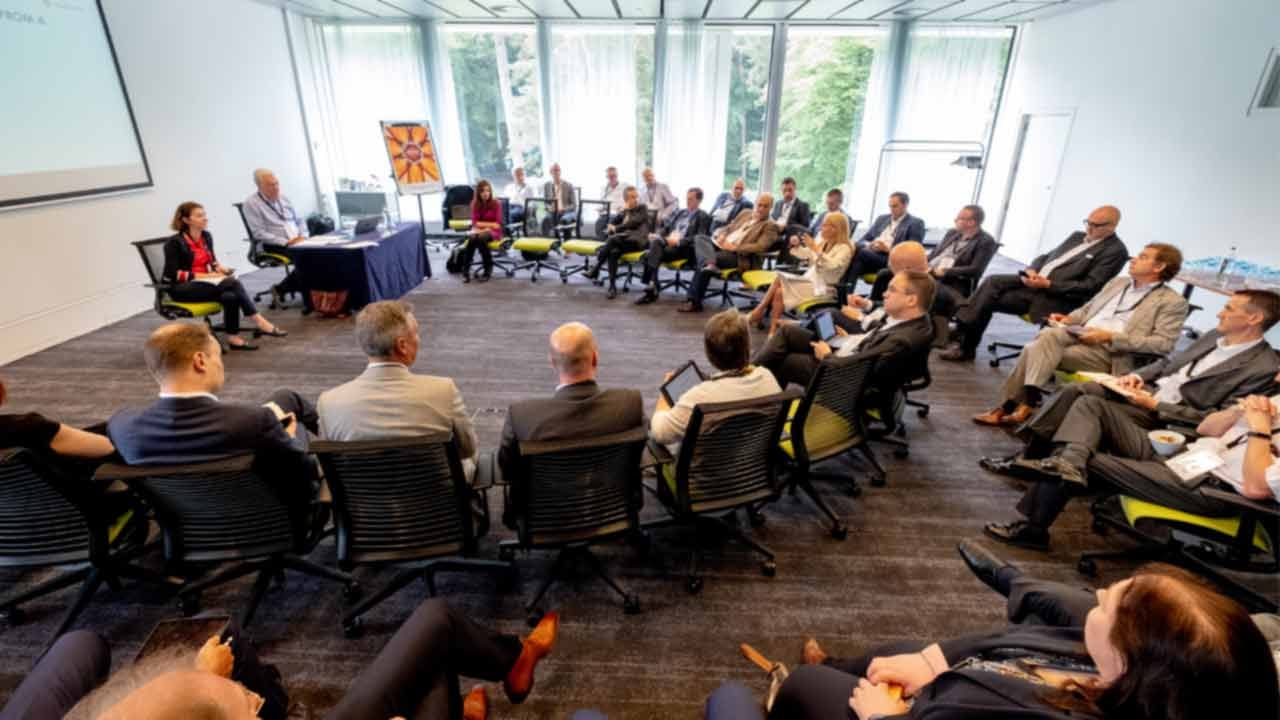
Find out more:
.png)
Poland 5-12-25 Invitation Only Physical Polish
Liderzy biznesowi pokładają ogromne nadzieje w agentach AI, widząc w nich szansę na zbudowanie przewagi konkurencyjnej. Rzadko jednak pada zasadnicze pytanie: czy cyfrowy fundament organizacji – dane, integracje, systemy – jest na to gotowy? Czy obecna strategia integracji wspiera ambicje biznesowe, czy je spowalnia? Podczas naszego biznesowego śniadania CIONET, organizowanego we współpracy z Digia (Finlandia) i Savangard, przyjrzymy się trendom, które dziś definiują architekturę i integracje w Europie i w Polsce. W gronie ok. 20 liderów IT porozmawiamy m.in. o tym: Czy strategia integracji danych i aplikacji powinna uwzględniać przyszłe zastosowania AI? Jak przekształcić kluczowe dane w powtarzalne „data products”, które przyspieszają dostarczanie wartości biznesowej? W jakim kierunku ewoluują platformy integracyjne – iPaaS i API Management? Cloudification - jakie lekcje wynoszą firmy, które przeszły takie transformacje z legacy do nowoczesnej integracji w chmurze? Jak zorganizować „integration core team”, który wzmacnia rozproszone i coraz bardziej niezależne zespoły technologiczne? Spotkanie odbędzie się w kameralnej atmosferze Centrum Praskiego Koneser (CHPTR) i będzie prowadzone w formule dyskusyjnej – z myślą o praktykach zajmujących się modernizacją architektury, integracją systemów i przygotowaniem IT na kolejne lata.
Read More.png)
Poland 8-12-25 Invitation Only Physical Polish
W wielu firmach monitoring wydaje się działać poprawnie, dopóki nie spojrzymy na to, czego nie widać: luki między narzędziami, brak wspólnego obrazu usług, opóźnienia między zdarzeniem a decyzją. W takiej sytuacji trudno wcześnie wykryć degradację, oszacować wpływ incydentów na klientów czy przewidzieć ryzyka, które uderzają w biznes, zanim IT zdąży zareagować. Podczas CIONET Executive Roundtable, którego partnerem jest Spluk, porozmawiamy o tym, ile organizacje tracą na rozproszonym monitoringu i jak wiele można zyskać, gdy staje się on spójnym systemem, a nie zbiorem narzędzi. Zastanowimy się, jak połączyć dane z aplikacji, infrastruktury i biznesu w jeden obraz, który realnie wspiera szybkość reakcji, stabilność usług i jakość decyzji.
Read More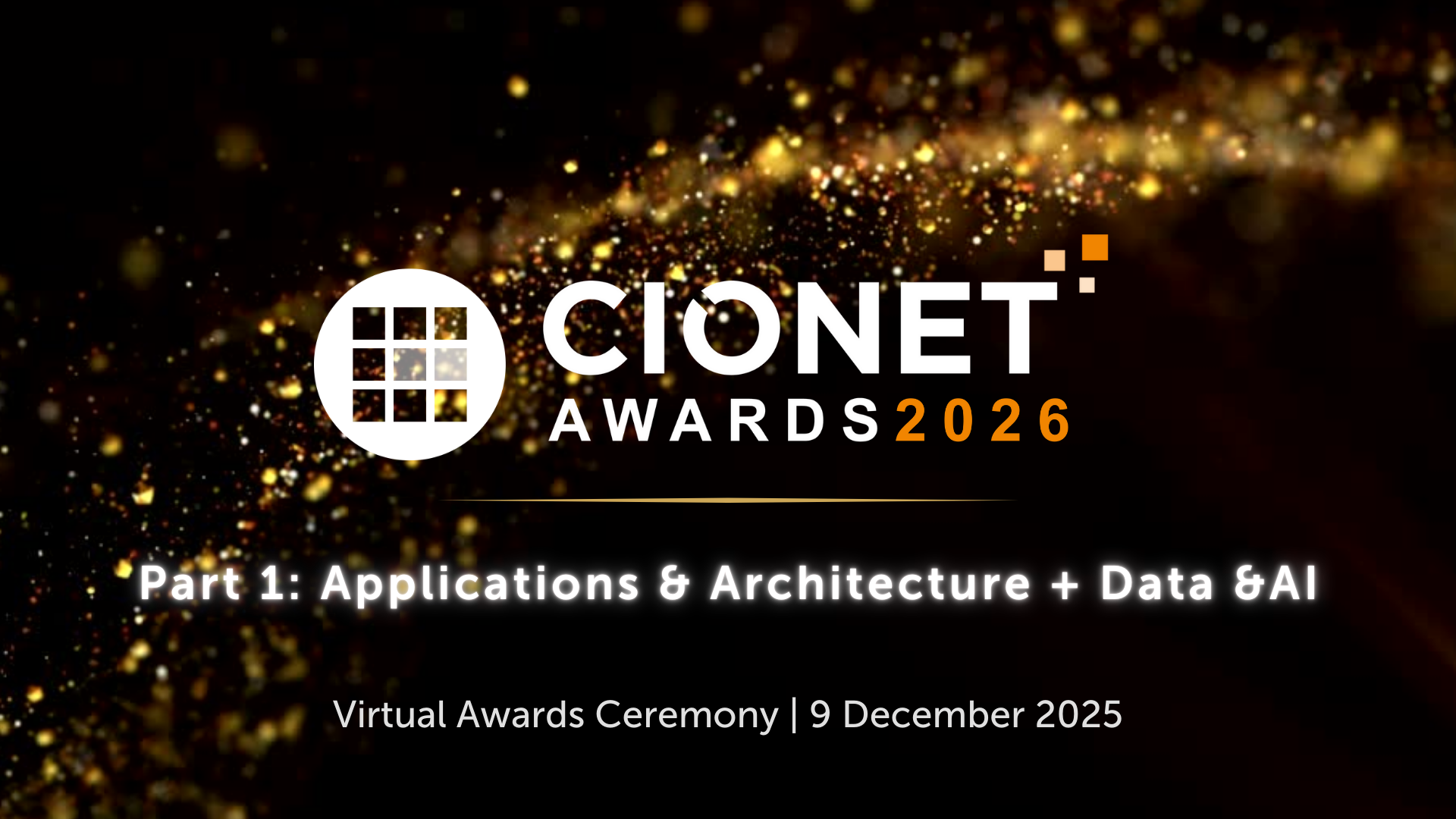
International 9-12-25 Public Virtual english
The CIONET Awards 2026: Part 1, the premier celebration of excellence in digital mission and leadership. During this event the spotlight falls on two of the most critical arenas in modern enterprise: Applications & Architecture and Data & AI. Prepare for a dynamic session where each nominee will present their groundbreaking achievements.
Read More.png)
Brazil 9-12-25 Country Members Physical portuguese
Cerimônia de Premiação CIONET BRASIL 2025.Reconheceremos as Empresas Líderes em Excelência Tecnológica em Projetos e os Líderes Digitais do Ano 2025.Quando?09 de Dezembro de 2025A partir das 18:30Onde?Sheraton São Paulo WTC HotelInscrições online: https://www.cionet.com/pt-br/events/pr%C3%AAmios-cionet-brasil-2025
Read More
Netherlands 9-12-25 Invitation Only english
At this exclusive CIONET Executive Roundtable, hosted in partnership with It’s Value, we will explore how Technology Business Management (TBM) principles can help CIOs and IT leaders make data-driven financial decisions that drive measurable business value.
Read MoreNetherlands 9-12-25 Invitation Only Physical english
Digital transformation and ongoing economic uncertainty are intensifying the pressure on IT leaders to do more with less. In this environment, gaining precise control over IT costs—while continuing to deliver effective, efficient, and innovative technology operations—is more critical than ever. At this exclusive CIONET Executive Roundtable, hosted in partnership with It’s Value, we will explore how Technology Business Management (TBM) principles can help CIOs and IT leaders make data-driven financial decisions that drive measurable business value. Key Discussion Themes Turning data insights into smarter IT investment decisions Setting priorities for cost optimisation and maximising ROI Quantifying and communicating the business value of IT initiatives Evaluating the principles of FinOps and the implications of public, private, and hybrid cloud environments for cost management Embedding effective change management to drive adoption and alignment Achieving tangible business outcomes from AI initiatives while maintaining fiscal discipline The evening will also feature a fireside chat with Sunil Anand, Global Head of Technology Business Management at National Grid. Sunil will share practical lessons and key milestones, retracing the National Grid cost management journey. This dinner offers a unique opportunity to: Exchange experiences with peers facing similar challenges Gain insights from TBM experts and industry practitioners Reassess your own IT financial strategy in a relaxed, collegial setting Join us for an evening of insight, discussion, and connection—designed to help you strengthen IT’s role as a true business value driver.
Read More.jpg)
Belgium Dec 4, 2025 Invitation Only Physical english
CIONET is committed to highlighting and celebrating female role models in IT, Tech & Digital, creating a leadership programme that empowers and elevates women within the tech industry. This initiative is dedicated to showcasing the achievements and successes of leading women, fostering an environment where female role models are recognised, and their contributions can ignite progress and inspire the next generation of women in IT.
Read More.png)
International Dec 9, 2025 Public Virtual english
The CIONET Awards 2026: Part 1, the premier celebration of excellence in digital mission and leadership. During this event the spotlight falls on two of the most critical arenas in modern enterprise: Applications & Architecture and Data & AI. Prepare for a dynamic session where each nominee will present their groundbreaking achievements.
Read More
Netherlands Dec 9, 2025 Invitation Only Physical english
Digital transformation and ongoing economic uncertainty are intensifying the pressure on IT leaders to do more with less. In this environment, gaining precise control over IT costs—while continuing to deliver effective, efficient, and innovative technology operations—is more critical than ever. At this exclusive CIONET Executive Roundtable, hosted in partnership with It’s Value, we will explore how Technology Business Management (TBM) principles can help CIOs and IT leaders make data-driven financial decisions that drive measurable business value. Key Discussion Themes Turning data insights into smarter IT investment decisions Setting priorities for cost optimisation and maximising ROI Quantifying and communicating the business value of IT initiatives Evaluating the principles of FinOps and the implications of public, private, and hybrid cloud environments for cost management Embedding effective change management to drive adoption and alignment Achieving tangible business outcomes from AI initiatives while maintaining fiscal discipline The evening will also feature a fireside chat with Sunil Anand, Global Head of Technology Business Management at National Grid. Sunil will share practical lessons and key milestones, retracing the National Grid cost management journey. This dinner offers a unique opportunity to: Exchange experiences with peers facing similar challenges Gain insights from TBM experts and industry practitioners Reassess your own IT financial strategy in a relaxed, collegial setting Join us for an evening of insight, discussion, and connection—designed to help you strengthen IT’s role as a true business value driver.
Read More.jpg)
Italy Dec 10, 2025 Invitation Only Physical italian
Questa roundtable esclusiva offrirà a CIO, CISO e Leader di ITOps/Engineering un confronto diretto per individuare le migliori strategie di Innovazione che, attraverso l'observability, ottimizzino il Return of Investment.
Read More.jpg)
Belgium Dec 11, 2025 Country Members Physical english
Imagine being able to monitor, simulate, and optimise an entire city, factory, or supply chain in real time. Next-generation digital twins are making this vision a reality, transforming how we manage and understand complex systems. By creating dynamic virtual replicas of physical assets and processes, digital twins allow organisations to predict issues, optimize performance, and make data-driven decisions with unprecedented accuracy.This event will explore how digital twins are being used across industries to revolutionize the way we operate and maintain large-scale, intricate systems—whether it’s the infrastructure of a smart city, the efficiency of a factory floor, or the resilience of global supply chains.Examples of Digital Twins in Action:Smart Cities: Urban planners can use digital twins to simulate traffic flow, monitor energy usage, or predict the impact of weather events on infrastructure. This enables cities to optimize resources and improve the quality of life for their citizens.Factories of the Future: Manufacturing plants are leveraging digital twins to monitor equipment in real time, prevent downtime, and optimize production lines. With predictive analytics, factories can avoid costly breakdowns and improve overall efficiency.Supply Chain Management: Complex supply chains, spanning continents and industries, can be modeled as digital twins to track shipments, simulate disruptions, and optimize logistics. Businesses can reduce inefficiencies and respond faster to market demands.Key Themes:Real-Time Monitoring and Simulation: How digital twins provide real-time insights into complex systems, allowing for dynamic response and optimization.Predictive Power: Leveraging AI and data analytics, digital twins help organisations predict and mitigate issues before they happen, from equipment failures to supply chain bottlenecks.Scalability Across Ecosystems: Digital twins aren’t limited to individual assets—learn how they can be scaled across entire ecosystems like smart cities or global supply chains for maximum impact.Building Trust and Security: With digital twins handling critical infrastructure and sensitive data, what are the security and governance frameworks needed to ensure trust in these virtual systems?Why You Should Attend:Next-generation digital twins are no longer just a concept—they are revolutionizing industries by offering a new way to manage complexity. Whether you’re looking to optimize a city, factory, or supply chain, this event will provide practical insights into how digital twins can transform your organisation’s operations and drive future innovation.
Read More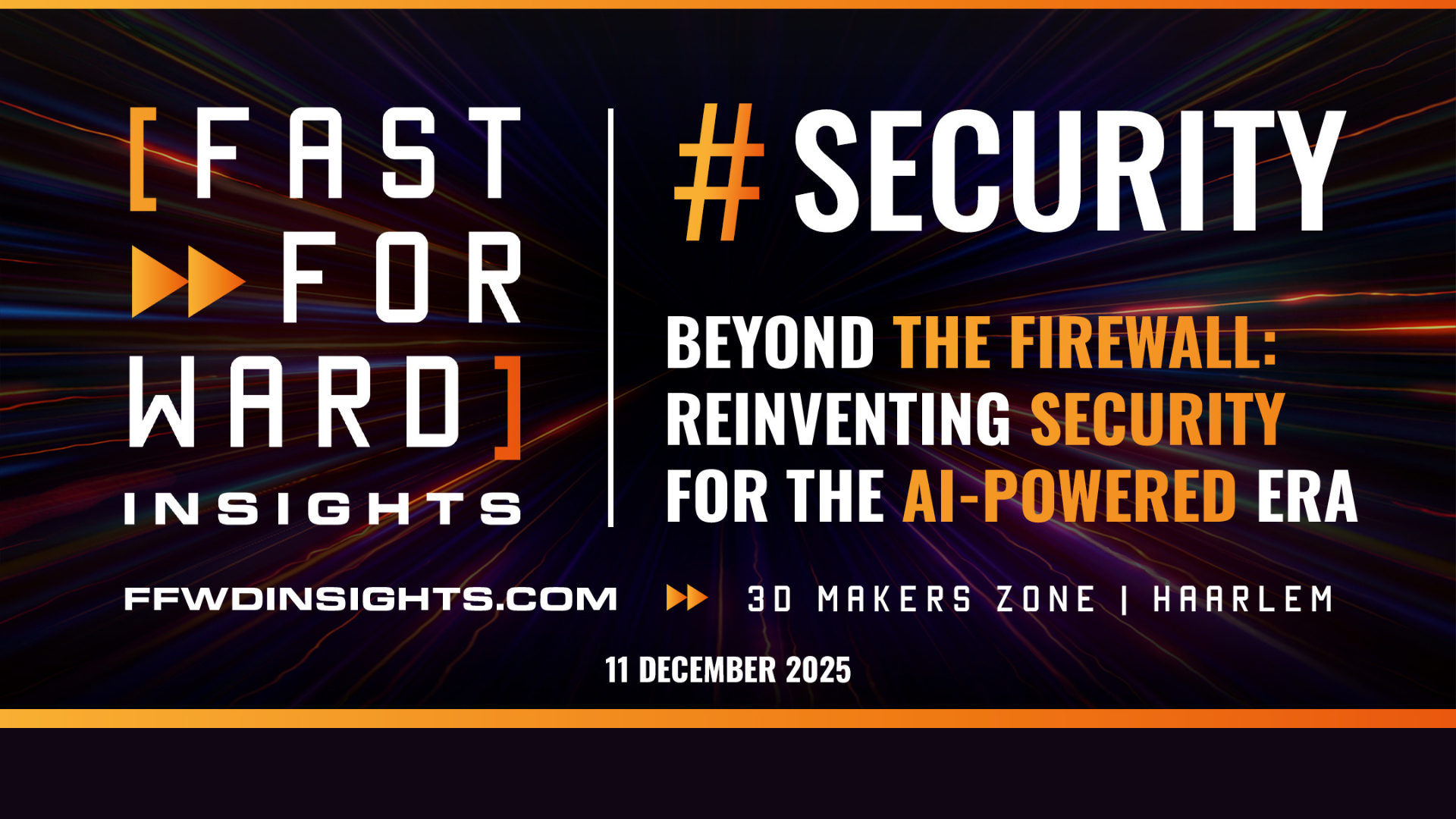
Netherlands Dec 11, 2025 Invitation Only Physical dutch
Navigating tommorrow's threatscape: Cybersecurity insights for digital leaders. Op 28 november in de 3D Makers Zone in Haarlem.
Read More.jpg)
Belgium Dec 4, 2025 Invitation Only Physical english
CIONET is committed to highlighting and celebrating female role models in IT, Tech & Digital, creating a leadership programme that empowers and elevates women within the tech industry. This initiative is dedicated to showcasing the achievements and successes of leading women, fostering an environment where female role models are recognised, and their contributions can ignite progress and inspire the next generation of women in IT.
Read More.png)
International Dec 9, 2025 Public Virtual english
The CIONET Awards 2026: Part 1, the premier celebration of excellence in digital mission and leadership. During this event the spotlight falls on two of the most critical arenas in modern enterprise: Applications & Architecture and Data & AI. Prepare for a dynamic session where each nominee will present their groundbreaking achievements.
Read More
Netherlands Dec 9, 2025 Invitation Only Physical english
Digital transformation and ongoing economic uncertainty are intensifying the pressure on IT leaders to do more with less. In this environment, gaining precise control over IT costs—while continuing to deliver effective, efficient, and innovative technology operations—is more critical than ever. At this exclusive CIONET Executive Roundtable, hosted in partnership with It’s Value, we will explore how Technology Business Management (TBM) principles can help CIOs and IT leaders make data-driven financial decisions that drive measurable business value. Key Discussion Themes Turning data insights into smarter IT investment decisions Setting priorities for cost optimisation and maximising ROI Quantifying and communicating the business value of IT initiatives Evaluating the principles of FinOps and the implications of public, private, and hybrid cloud environments for cost management Embedding effective change management to drive adoption and alignment Achieving tangible business outcomes from AI initiatives while maintaining fiscal discipline The evening will also feature a fireside chat with Sunil Anand, Global Head of Technology Business Management at National Grid. Sunil will share practical lessons and key milestones, retracing the National Grid cost management journey. This dinner offers a unique opportunity to: Exchange experiences with peers facing similar challenges Gain insights from TBM experts and industry practitioners Reassess your own IT financial strategy in a relaxed, collegial setting Join us for an evening of insight, discussion, and connection—designed to help you strengthen IT’s role as a true business value driver.
Read More.jpg)
Italy Dec 10, 2025 Invitation Only Physical italian
Questa roundtable esclusiva offrirà a CIO, CISO e Leader di ITOps/Engineering un confronto diretto per individuare le migliori strategie di Innovazione che, attraverso l'observability, ottimizzino il Return of Investment.
Read More.jpg)
Belgium Dec 11, 2025 Country Members Physical english
Imagine being able to monitor, simulate, and optimise an entire city, factory, or supply chain in real time. Next-generation digital twins are making this vision a reality, transforming how we manage and understand complex systems. By creating dynamic virtual replicas of physical assets and processes, digital twins allow organisations to predict issues, optimize performance, and make data-driven decisions with unprecedented accuracy.This event will explore how digital twins are being used across industries to revolutionize the way we operate and maintain large-scale, intricate systems—whether it’s the infrastructure of a smart city, the efficiency of a factory floor, or the resilience of global supply chains.Examples of Digital Twins in Action:Smart Cities: Urban planners can use digital twins to simulate traffic flow, monitor energy usage, or predict the impact of weather events on infrastructure. This enables cities to optimize resources and improve the quality of life for their citizens.Factories of the Future: Manufacturing plants are leveraging digital twins to monitor equipment in real time, prevent downtime, and optimize production lines. With predictive analytics, factories can avoid costly breakdowns and improve overall efficiency.Supply Chain Management: Complex supply chains, spanning continents and industries, can be modeled as digital twins to track shipments, simulate disruptions, and optimize logistics. Businesses can reduce inefficiencies and respond faster to market demands.Key Themes:Real-Time Monitoring and Simulation: How digital twins provide real-time insights into complex systems, allowing for dynamic response and optimization.Predictive Power: Leveraging AI and data analytics, digital twins help organisations predict and mitigate issues before they happen, from equipment failures to supply chain bottlenecks.Scalability Across Ecosystems: Digital twins aren’t limited to individual assets—learn how they can be scaled across entire ecosystems like smart cities or global supply chains for maximum impact.Building Trust and Security: With digital twins handling critical infrastructure and sensitive data, what are the security and governance frameworks needed to ensure trust in these virtual systems?Why You Should Attend:Next-generation digital twins are no longer just a concept—they are revolutionizing industries by offering a new way to manage complexity. Whether you’re looking to optimize a city, factory, or supply chain, this event will provide practical insights into how digital twins can transform your organisation’s operations and drive future innovation.
Read More
Netherlands Dec 11, 2025 Invitation Only Physical dutch
Navigating tommorrow's threatscape: Cybersecurity insights for digital leaders. Op 28 november in de 3D Makers Zone in Haarlem.
Read MoreUniversity of Gothenburg adopts application platform for data science
Sweden's University of Gothenburg ditched slow VMs for Red Hat OpenShift, modernizing their website and research. The platform's self-service and containerization capabilities streamline development, while OpenShift Virtualization lets them seamlessly integrate legacy apps. This frees IT for higher-value tasks and accelerates research projects.
Founded in 1891, the University of Gothenburg is the third-oldest of the current Swedish universities. Lying in the heart of Sweden’s second-largest city, its strong research and appealing study programs attract scientists and students from around the world. Around 54,000 students and 6,600 staff study and work across its 8 faculties and 38 departments. The university also has a large number of research centers of expertise, which span several academic disciplines. These focus on meeting societal challenges, with their new knowledge and new perspectives contributing to a better future.
The university chose Red Hat Enterprise Linux® as its standard distribution over a decade ago. When deciding to build a new web platform in 2020, it recognized that an application platform would make it faster and easier for developers to test, deploy, and launch new services. However, building an application platform on the university’s legacy VMs would be slow; it could take up to 3 months to deliver the new environment.
“An application platform would give research teams access to the IT environments they need much faster, and our IT unit would be able to manage resources centrally,” said Carl-Johan Schenström, IT Infrastructure Specialist at the University of Gothenburg. “What is more, with the application platform’s built-in networking, we would not need to rely on our networking team to set up ports manually so our research teams’ projects can communicate with other systems.”
Red Hat OpenShift is critical to our future success. It frees up our IT unit, allows projects to progress faster, and we can onboard new developers fast. Johan Kindstrand - Senior Consultant, Atea, University of Gothenburg
We are excited about containerizing our .NET applications and expanding our Red Hat OpenShift use cases to include AI, ML, and HPC projects. Carl-Johan Schenström - IT Infrastructure Specialist, University of Gothenburg
The university began building the website on OKD, the open source community version of OpenShift. Technology partner Atea Sverige (Atea) suggested adopting Red Hat OpenShift. “We are only 2 people, so the enterprise-level support that comes with Red Hat OpenShift is essential; everyone else is supporting our legacy systems,” said Johan Kindstrand, Senior Consultant, Atea, University of Gothenburg. “And Red Hat OpenShift will make it easier for us to find new talent when we need it.”
The university purchased a Red Hat OpenShift Platform Plus academic license. “The licensing cost is very attractive, and we are very interested in using Red Hat Advanced Cluster Management for Kubernetes, Advanced Cluster Security for Kubernetes, and Red Hat Quay,” said Kindstrand. “Red Hat Advanced Cluster Management will allow us to manage our Red Hat OpenShift clusters centrally as their numbers grow. Red Hat Advanced Cluster Management will quickly become essential.”
Atea and the university’s IT unit deployed Red Hat OpenShift on VMs using user-provisioned infrastructure (UPI) and migrated the university website from OKD. “The Red Hat Knowledge Base was really helpful. There are lots of great resources in there,” said Schenström.
The university plans to deploy more clusters for development and testing in addition to production. “Many departments are looking into using Red Hat OpenShift,” said Schenström. Those projects include building a trusted environment for research projects and a marine biology “research vessel,” which stores the data it collects in Red Hat OpenShift. Internal projects will be deployed on VMs and research projects on bare metal.
A Red Hat Solution Architect keeps the partners informed about upcoming features. “Our developers really like learning about new features,” said Schenström. “They loved the OpenShift Dev Spaces demo, for instance.” Other important features include the Open Data Hub, an open source project providing tools for running large and distributed artificial intelligence (AI) workloads on Red Hat OpenShift. The tools support monitoring and data storage and also include distributed AI and machine learning (ML) workflows and the Jupyter Notebook development environment.
Self-service tools built into Red Hat OpenShift means developers no longer need to wait for the IT unit to manually provision and configure VMs according to each project’s needs. Developers and researchers are a lot less dependent on IT and can get moving with their projects sooner on the application platform, and the IT unit has more time available to support projects in other ways
“We can create a namespace in Red Hat OpenShift in a few minutes. They can then install their collecting application, and they are good to go,” said Schenström, highlighting how the marine biology department can now create research vessels. “Previously, we would set up a VM, configure it according to the project’s needs, talk with the networking people, and set the ports for communicating with all the sensors—and that would have taken a few days, a week, or even more.”
The namespaces integrate with the university’s Active Directory for credentials and roles. Once they are created, developers can deploy whatever applications they need in any environment. Future plans include using Red Hat OpenShift to provide more self-service so developers can create namespaces themselves
The university has also recently started using OpenShift Dev Spaces, a collaborative Kubernetesnative solution for rapid application development. OpenShift Dev Spaces delivers consistent developer environments on Red Hat OpenShift, allowing anyone with a browser to contribute code in under 2 minutes.
“OpenShift Dev Spaces allows us to onboard developers within minutes,” said Schenström. “We like how it provides developers—whether in our IT unit or more widely across individual departments—with a consistent, secure, and zero-configuration development environment.”
The trusted environment Schenström and his team are building for sensitive research projects uses OpenShift Virtualization to allow VMs to run alongside containers on the same platform, simplifying management and improving time to production.
“We use OpenShift Virtualization to run Windows infrastructure—the Active Directory Controllers and remote updates, for instance—on VMs in Red Hat OpenShift,” said Schenström. “We then deploy a virtual Windows server with remote desktop services to create an isolated bubble for each research team.”
The university has a lot of projects using the Jupyter Notebook. The School of Business, Economics, and Law has been using the multiuser version (JupyterHub) to support 3 courses with up to 160 students each since 2021.
“JupyterHub allows a smaller number of teachers to teach and support a greater number of students. We can easily enter students’ servers to help and support,” said Mari Paananen, Associate Professor at the University of Gothenburg.
JupyterHub means students do not need to install software on their computers, which can cause installation problems and waste around 20% of the allocated teaching time. “It levels the playing field among students, as they all have access to the same processing power, regardless of the capacity of their own computer, and provides students with instant access to the same data from a shared folder,” said Paananen.
The University of Gothenburg is expanding use cases for the Red Hat application platform, including for data science projects. “We have users who want to use graphics processing units (GPUs) for AI, ML, and, in the future, high-performance computing (HPC) projects,” said Schenström, explaining how projects buying physical servers with dedicated GPUs and then IT managing those servers is not resource effective. “We would like to provide a data science platform based on Red Hat OpenShift with shared access to GPU and CPU resources. We are looking at hybrid cloud for those compute-heavy applications,” said Schenström. “The auto-scaling provided by public cloud environments will help us manage costs.”
The University of Gothenburg uses Open Data Hub, an open source AI platform designed for the hybrid cloud, to provide their data scientists with a Jupyter-as-a-service collaborative environment for use cases like a chatbot for Alzheimer’s research. They are also considering OpenShift AI, Red Hat’s commercial product based on Open Data Hub, which provides a flexible, scalable MLOps platform that gives teams the tools they need to build, deploy, and manage AI-enabled applications.
Plans for the future include containerizing legacy applications, including internally developed Windows applications. “We can now modernize our legacy Windows applications and get rid of some of our legacy physical servers,” said Schenström. OpenShift Virtualization makes containerizing .NET applications straightforward. Windows developers write their applications as they normally would, but instead of deploying onto a Windows server, they deploy to Red Hat OpenShift.
“Red Hat OpenShift is critical to our future success,” said Kindstrand. “It frees up our IT unit, allows projects to progress faster, and we can onboard new developers fast. We are excited about containerizing our .NET applications and expanding our Red Hat OpenShift use cases to include AI, ML, and HPC projects.”
137 Views 0 Likes Read More

Embark on a culinary journey through the ever-evolving world of digital leadership with our third edition of the CIONET Cookbook: Recipes for Digital Success. Unveiling the intricate trilemma faced by today’s Master Chefs, our trailblazing European CIOs address a challenge at the nexus of customer interests, digital transformation strategies, and IT modernisation. Their secret? Synchronising the gearing between customer, business, and technology to create a frictionless movement through the digital landscape.
The CIONET Cookbook uses the analogy of a five-star restaurant to explain the importance of optimally integrated technology, with the CIO as Master Chef. In order to provide the best service to its customers, a top restaurant must have the right atmosphere, an inviting menu, a well-equipped kitchen, talented and committed front-of-house and kitchen staff and smooth-running processes that ensure an enjoyable experience for diners.
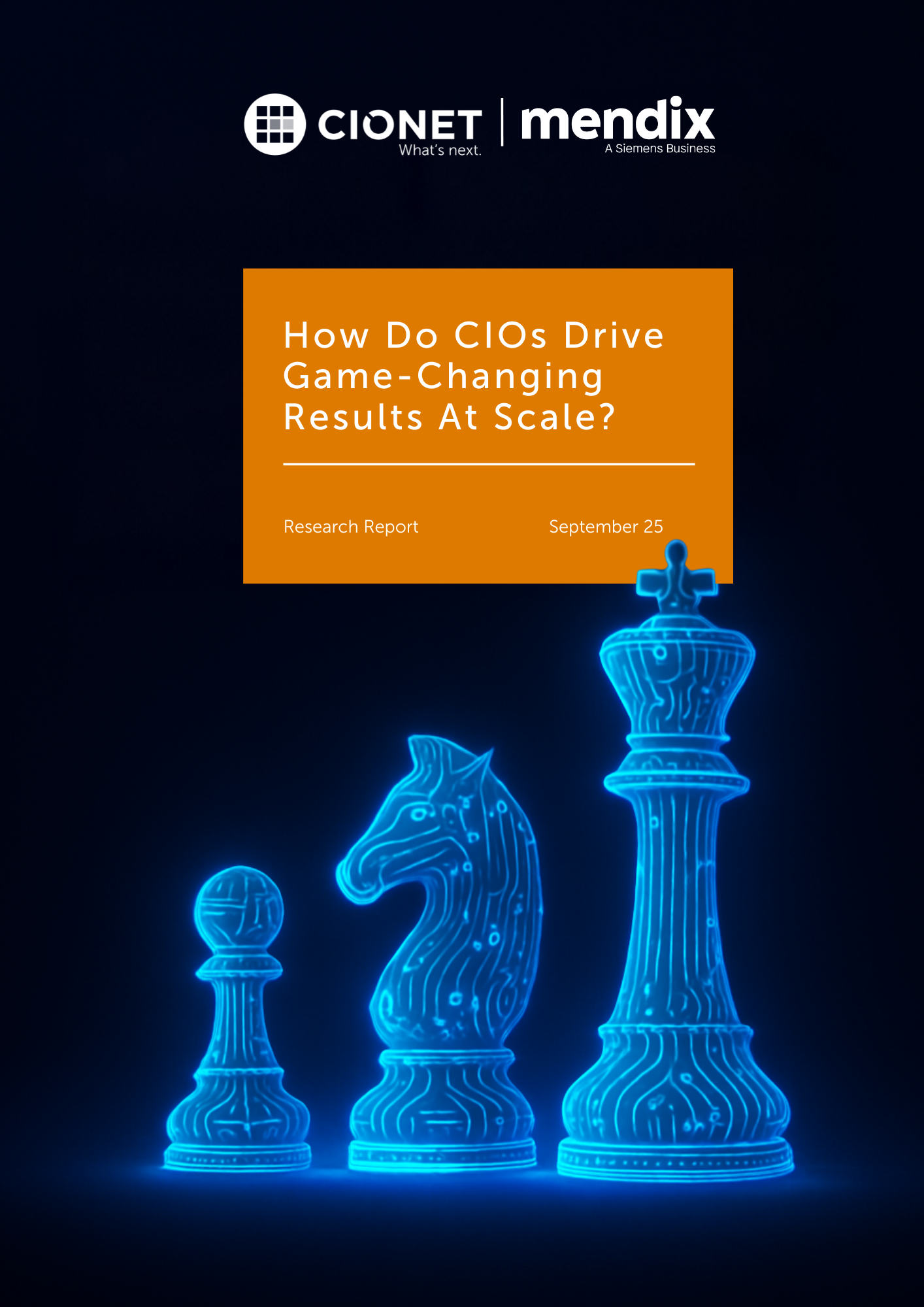
The role of the CIO has evolved from managing systems to shaping outcomes: growth, resilience, and competitive edge are now won or lost in the technology arena. Today ’ s CIOs must balance stability with innovation, control costs while attracting scarce talent, and modernise legacy infrastructure while adopting emerging technologies.

As AI transitions from a specialised tool to an all-pervasive force, understanding its profound implications for our human lives is no longer merely academic but an urgent imperative for social well-being and strategic preparedness.
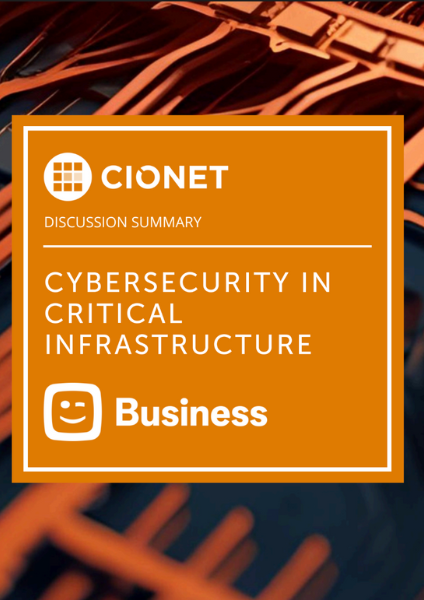
Geopolitical tensions have dominated the headlines for over two years now. In this context, the cyber threat landscape is also evolving rapidly. The protection and security of critical infrastructure – both physical and digital – is becoming increasingly important.
In our new app, our members connect with other digital leaders from around the world to find better solutions to their challenges.
Connect with digital leaders like you
Share ideas, best practices, and new resources
Experience inspiring and thought-provoking content and conversations you can’t find anywhere else
Make better, more well-informed decisions about the topics that are most important to you
.png?width=600&height=600&name=Anna%20Kopp%20(1).png)
Head of IT Germany and Regional Office Lead Munich, Microsoft
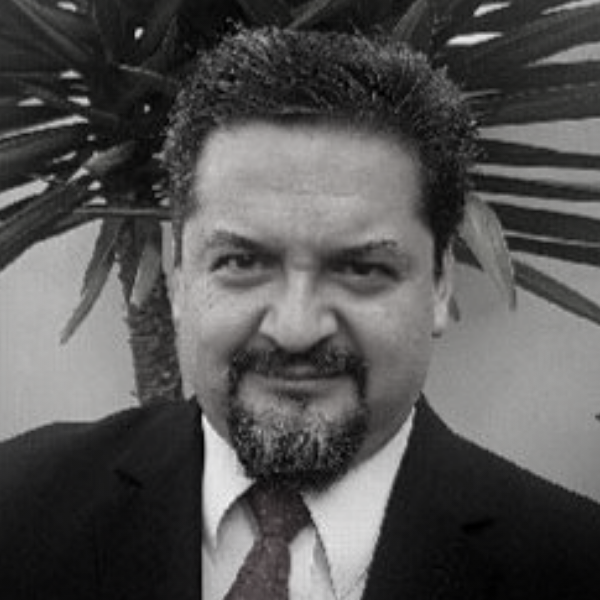
IT Director, IT Thinker

Vice president IT & Compliance, VisionaryRCM (A Carlyle Grp Company)
CIONET’s mission is to help IT executives become more at ease and above all more successful in their jobs. So they can do more than just keep up with change but ultimately define it. CIONET opens up a whole new universe of opportunities in IT management.
With the largest membership of corporate digital leaders across Europe, Latin America, US and Australia, CIONET has the expertise and pioneering vision to solve or address any IT management challenge.
From our local and global events, from our publications and research to our executive education programmes, everything we do is aimed at making sure digital leaders maximise their potential.
with digital leaders who share your interests, who face the same challenges, who care about the same topics.
stories, experiences, and ideas around our shared mission.
from our exclusive events, publications and research.
inspiration, thought-provoking conversations, expert perspectives and exclusive first-hand content each and every day
and make better, more well-informed decisions on how to lead your digital business.
your potential. Realise your ambitions.
You can either send us a registered handwritten letter explaining why you'd like to become a member or you can simply talk to us right here!
Would you like to know more about CIONET, membership or partnership opportunities? Do you have feedback or any other question? Send us a message!